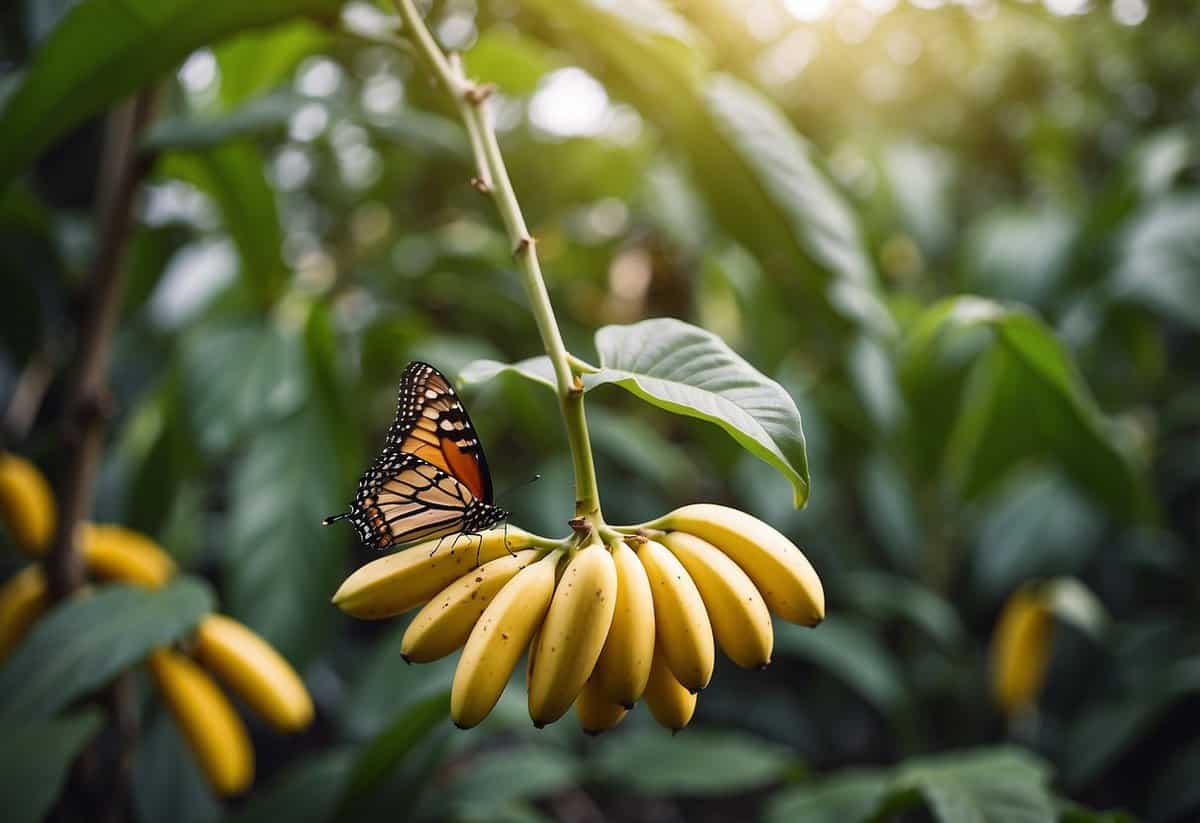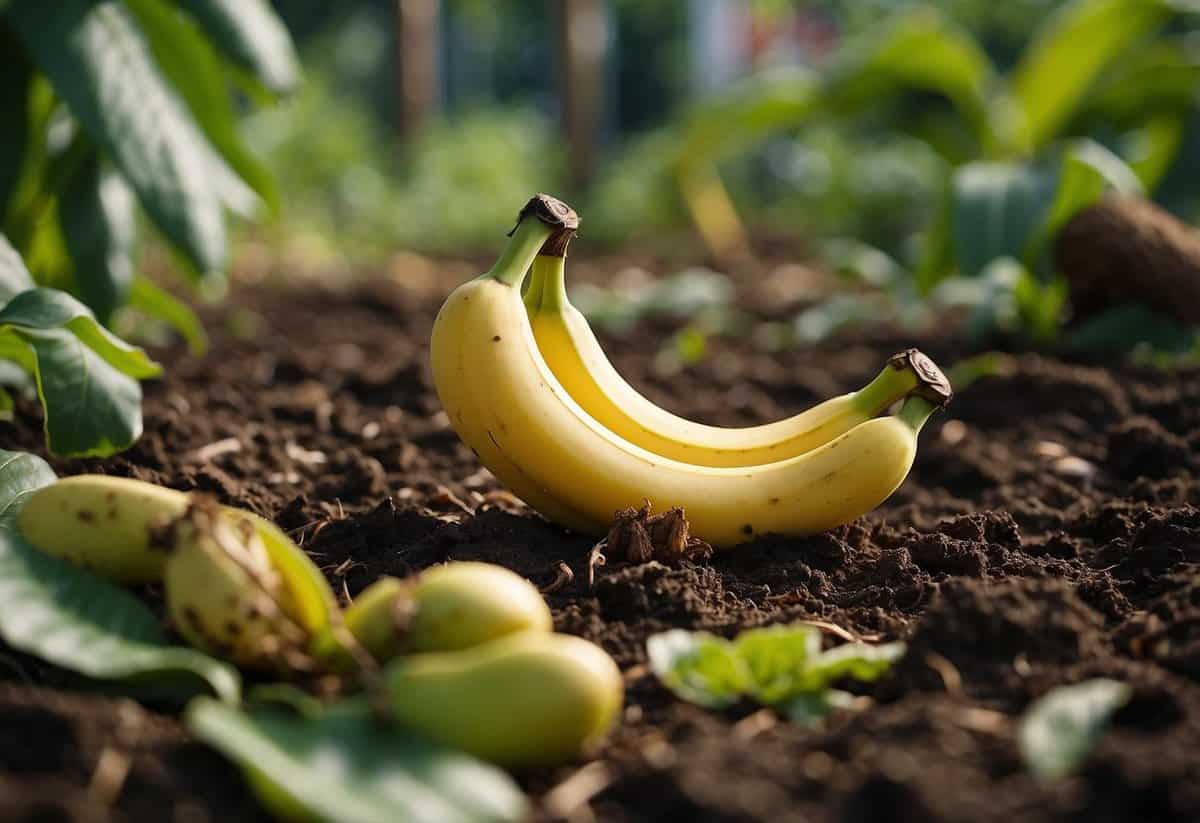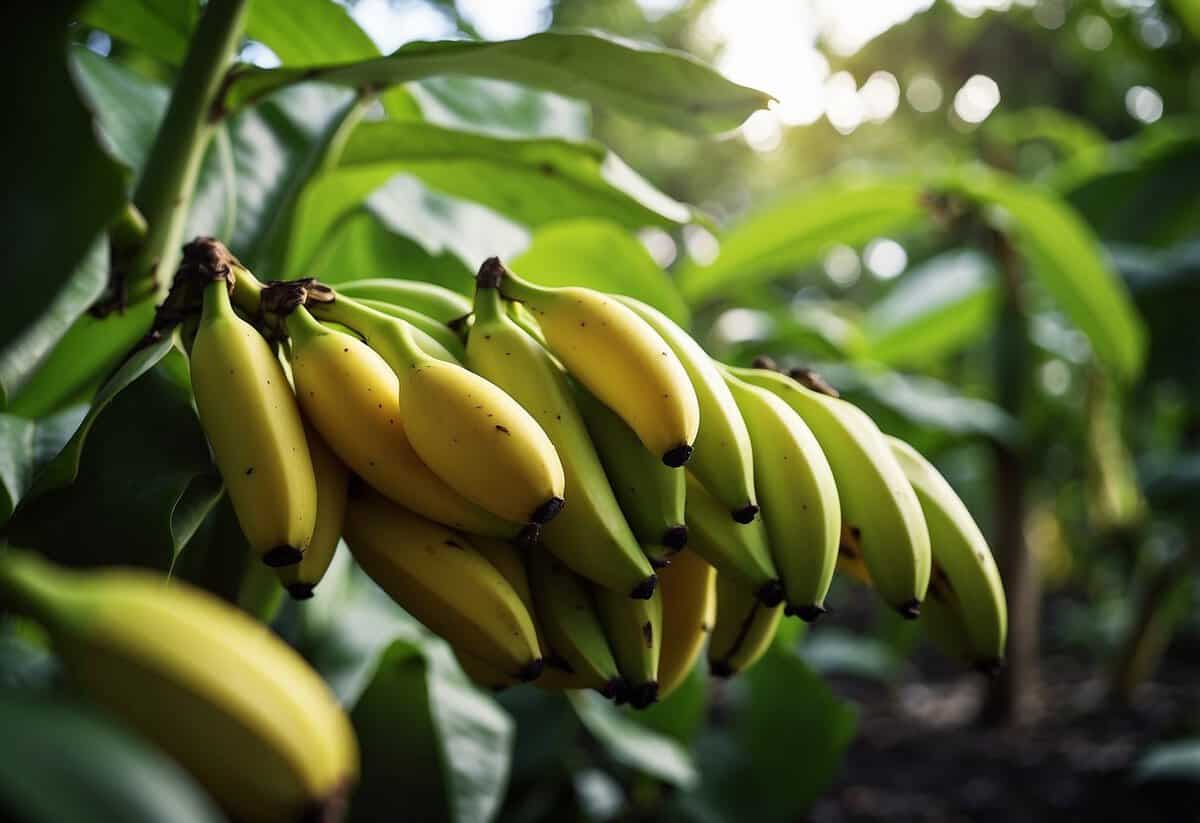What Happens When You Put Bananas in Your Garden? Discover the Surprising Benefits
Ever wondered what happens when you put bananas in your garden? You’re in for a treat because bananas can be a great addition to your garden soil. When banana peels decompose, they release nutrients that enrich the soil, making it more fertile and better for your plants.

Not only do banana peels serve as a natural fertilizer, they’re also known to deter pests like aphids. These little insects can wreak havoc on your plants, so keeping them at bay with something as simple as banana peels is a big win. Plus, bananas help with the overall health of your garden, promoting better growth for fruits and vegetables.
On top of that, adding banana peels to your compost can make it richer and more effective. Your garden will thank you by blooming more beautifully and producing healthier crops. Check out more tips on using bananas in your garden here.
Benefits of Banana Byproducts in the Garden

Using banana byproducts like banana peels can significantly improve your garden. They help in boosting soil fertility, naturally control pests, and enhance plant growth and health.
Boosting Soil Fertility
Banana peels are rich in potassium, nitrogen, phosphorus, calcium, and magnesium. When you add banana peels to your compost or soil, they decompose and release these nutrients into the soil. This makes the soil more nutrient-rich, which is important for healthy plant growth.
You can place banana peels directly around plants or mix them into compost. As they break down, they contribute to the overall organic matter in the soil, enhancing its structure and fertility. This process is beneficial for gardens looking to maintain high soil quality organically.
Natural Pest Control
Banana peels can help to deter pests like aphids. Placing strips of banana peel around your plants acts as a natural repellant. Aphids and other small insects are less likely to invade your garden, keeping your plants healthier.
Some gardeners also bury banana peels near the roots of their plants to keep pests away. The peels decompose, enriching the soil, and the scent can be a deterrent for pests. This method is a simple and organic way to manage garden pests without chemicals.
Enhancing Plant Growth and Health
Banana peels and other banana byproducts promote plant growth and health. The potassium found in banana products helps with overall plant vigor, often resulting in stronger stems and better root development.
When used as a natural fertilizer, banana peels can also improve a plant’s ability to resist diseases. The easily accessible nutrients in banana peels support healthy growth cycles, making your plants more resilient. Regularly adding these byproducts to your garden can ensure that your plants get all the essential minerals they need for thriving.
Integrating Bananas into Your Composting Practices

Adding bananas to your compost heap can help turn your kitchen waste into nutrient-rich soil. Learn the best methods for incorporating banana scraps and the dos and don’ts to avoid common pitfalls.
Creating Nutrient-Rich Compost
Bananas are packed with important nutrients like phosphorus, potassium, magnesium, and calcium. These elements are vital for healthy plant growth. When you add banana peels to your compost pile, they decompose and release these nutrients into the soil.
Start by chopping banana peels into smaller pieces. This speeds up the decomposition process. You can use both the peels and the ends or scraps.
Bananas contain natural sugars that feed beneficial bacteria. This promotes a balanced composting process. To avoid pests, make sure you bury the banana peels under other compost layers.
Consider mixing the banana scraps with other high-carbon materials like dried leaves or paper. This helps balance the nitrogen-rich content of the bananas and keeps your compost pile healthy.
Composting Dos and Don’ts
Do:
- Chop Peels: Cutting banana peels into smaller pieces speeds up decomposition.
- Mix Properly: Combine banana peels with other compost materials for a balanced composition.
- Bury Peels: To avoid pests and odors, always bury banana peels under a layer of compost.
Don’t:
- Avoid Whole Bananas: Whole bananas take longer to decompose and may attract pests.
- Skip Balancing: Don’t add too many banana peels without mixing in other compost materials. This can lead to imbalances and slow down the composting process.
- Overlook Odors: Make sure to manage your compost pile well to avoid any unpleasant smells.
By following these simple guidelines, you can turn your kitchen trash into a compost treasure, enriching your garden soil and promoting healthy plant growth.
Preparing Your Garden for Banana Byproducts

Using banana byproducts in your garden can greatly improve soil health and plant growth. This section covers how to get your garden ready for these benefits and what to look out for.
Analyzing Soil Condition
First, check the pH level of your soil. Bananas thrive in soil with a pH between 5.5 and 7.0. If your soil is outside this range, you can adjust it by adding lime to raise the pH or sulfur to lower it.
Make sure your garden soil is well-draining. Banana byproducts like peels decompose quickly, and their nutrients reach the plants faster in soil that doesn’t retain excess water. Adding sand or compost can improve drainage if needed.
Mulching is key for maintaining soil moisture. Spread a thick layer of mulch around your plants to keep the roots cool and moist. This also helps in suppressing weeds, giving your plants more room to grow.
Finally, consider sunlight and temperature. Bananas and their byproducts work best in warm temperatures and require at least six hours of direct sunlight per day. Choose a sunny spot in your garden to ensure that your soil gets enough light and warmth.
Growing Banana Plants in the Home Garden

Growing banana plants in your garden can be rewarding. You will need to choose the right variety, understand planting tips, optimize watering and sunlight, and learn about harvesting cycles.
Selecting the Right Variety
When selecting a banana variety, consider your climate and space. Popular varieties like the Dwarf Cavendish and Lady Finger are well-suited for home gardens. The Dwarf Cavendish grows up to 9 feet tall and produces sweet fruit. The Lady Finger is shorter and gives sweet, small bananas.
If you live in a cooler climate, choose hardier varieties. Avoid tall varieties if space is limited. Plantain is another option, which is less sweet and more starchy.
Planting and Maintenance Tips
Banana plants thrive in warm climates with well-draining soil. Ensure the soil pH is between 5.5 and 7.0. If the soil pH is too low, add lime to adjust it. Space your banana plants about four feet apart to allow growth.
Mulch around the plants helps retain moisture and suppress weeds. A thick layer keeps roots cool and soil moist. Regular fertilizing is important, especially with potassium-rich fertilizers.
Optimizing Watering and Sunlight Exposure
Banana plants need plenty of water but do not like waterlogged roots. Ensure you have good drainage. Deep watering once or twice a week is usually sufficient.
Bananas require at least six hours of direct sunlight daily. In very hot areas, partially shading your plants can prevent sunscald. Young plants are more sensitive and benefit from extra shade.
Understanding Harvesting Cycles
Harvesting bananas happens between 15 to 18 months after planting. The fruit is ready when it is plump and green. Cut off the fruiting stalks when the bananas are nearly ripe.
Fruits ripen faster on the tree and can be picked one by one. Monitor the bananas closely to avoid overripeness. Once harvested, allow them to ripen indoors for a sweeter taste.
You now have the basics to grow and enjoy your own banana plants at home. Happy gardening!
Protecting Your Garden from Pests and Diseases

Ensuring your banana plants stay healthy involves addressing pests and diseases proactively. You can achieve this through organic pest management, recognizing common ailments, and fostering strong plant immunity.
Implementing Organic Pest Management
One of the best ways to keep your banana plants free from pests is to use organic pest management techniques. For instance, neem oil can be very effective against aphids and other small insects. You can mix it with water and spray it on the leaves.
Introducing beneficial insects like ladybugs can also help keep pest populations in check. They feed on harmful pests like aphids. Another method is to use insecticidal soap, a safe option for many garden pests that won’t harm your plants.
Regularly checking your banana plants for signs of pests can help you catch problems early. Look under leaves and at plant stems for small insects or eggs. Early intervention will reduce the risk of a significant infestation.
Recognizing Common Banana-Related Diseases
Banana plants are prone to several diseases, including fungal infections like Panama disease and Black Sigatoka. Panama disease, caused by the Fusarium fungus, can severely affect your plants. Symptoms include yellowing leaves that eventually wilt and die.
Black Sigatoka is another common disease, presenting as dark streaks on the leaves. Timely detection is crucial for controlling these diseases. If you notice spots or streaks on your banana plant leaves, it may indicate a fungal infection.
Removing and properly disposing of infected leaves can help prevent the disease from spreading further. Avoid using overhead watering methods, as wet leaves can promote fungal growth. Instead, use drip irrigation or water the plants at the base to keep foliage dry.
Fostering Strong Plant Immunity
A strong, healthy plant is more resistant to pests and diseases. Ensuring your banana plants receive adequate nutrients can boost their immunity. Use a well-balanced fertilizer that provides essential nutrients such as nitrogen, phosphorus, and potassium.
Regular pruning promotes air circulation around the plant, reducing the likelihood of fungal diseases. Remove any dead or unhealthy leaves promptly. Consistent maintenance keeps your plants strong and less prone to diseases.
Maintaining a regular watering schedule is also essential. Overwatering can lead to root rot, while underwatering can stress the plant, making it more vulnerable to pests and diseases. Aim to keep the soil moist but not waterlogged.
By implementing these practices, you’ll create a healthier environment for your banana plants, ensuring they thrive and produce delicious fruit.







